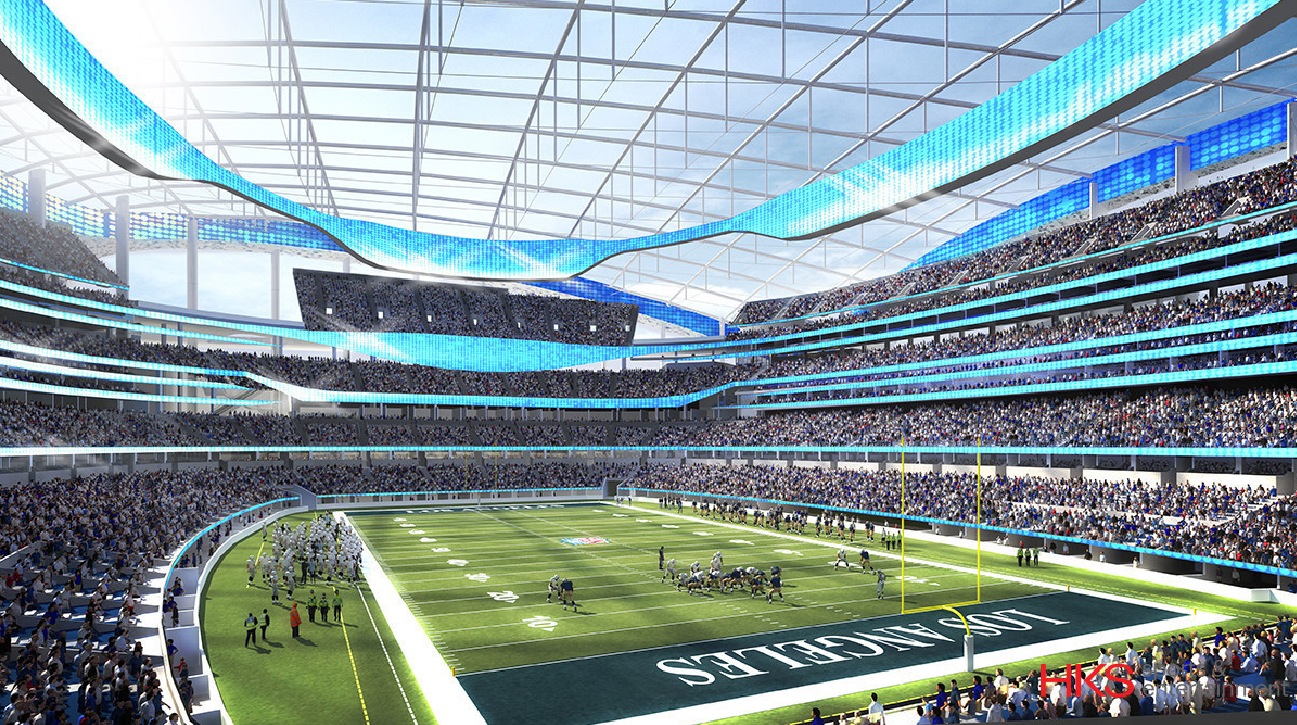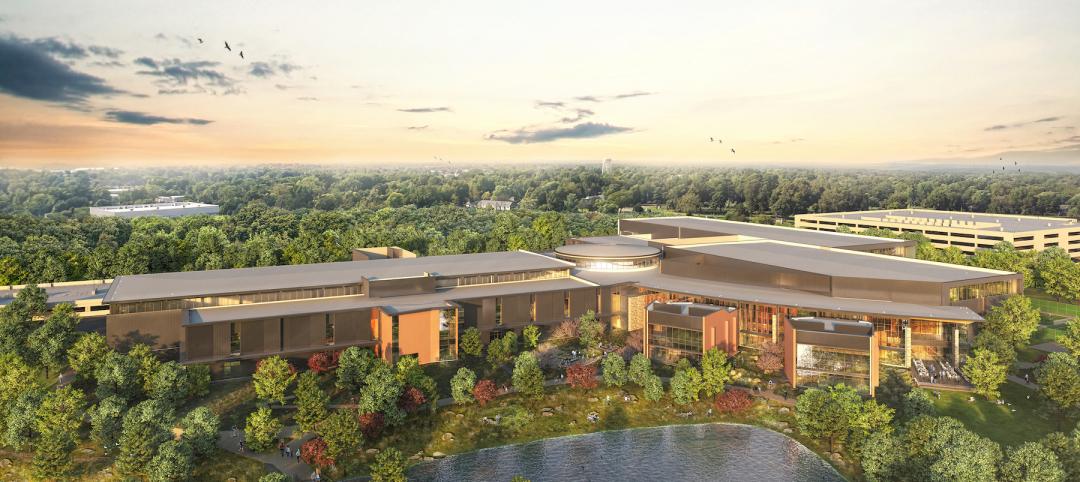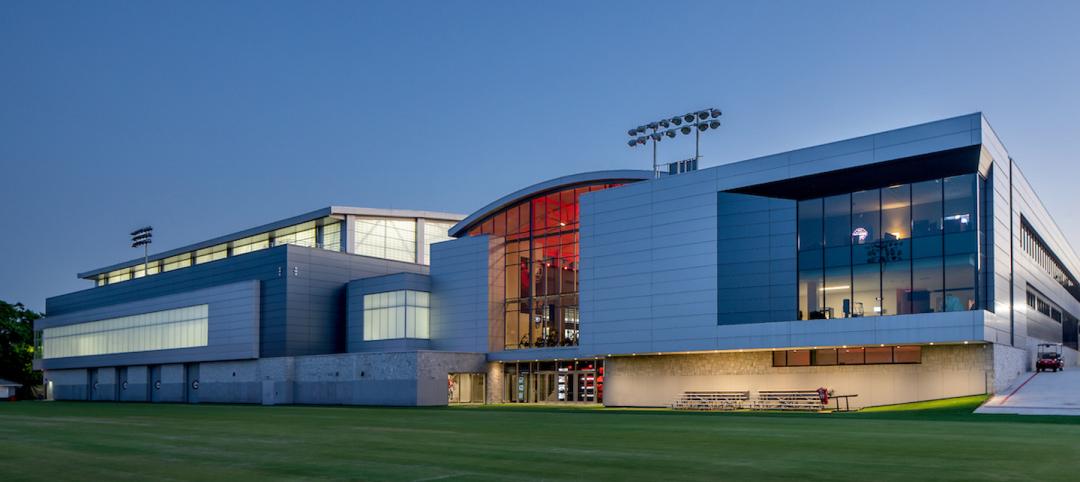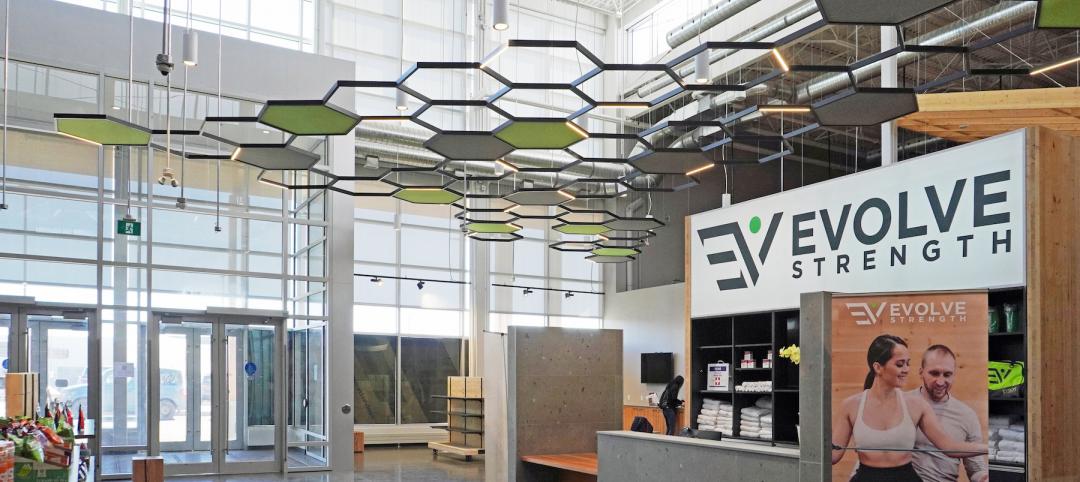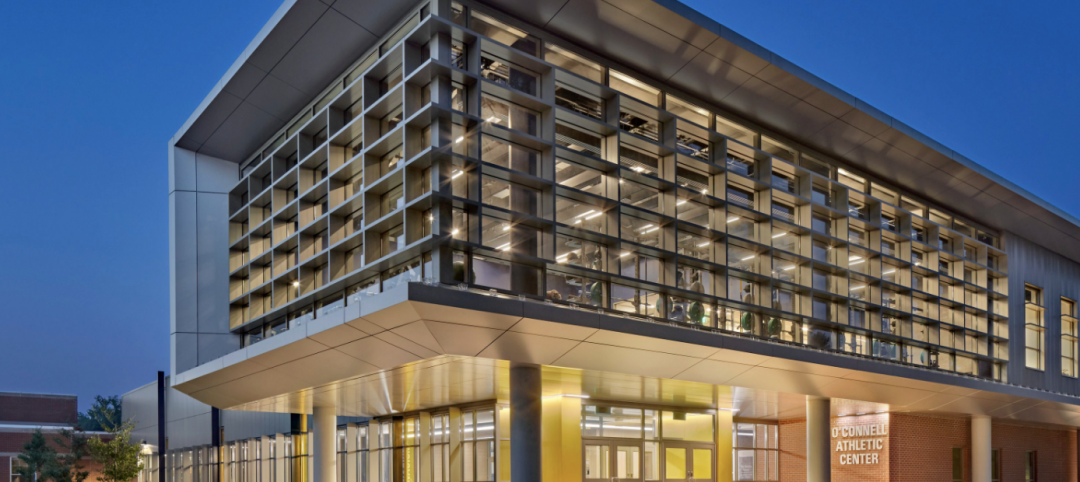After years of rumors and speculation, and with plenty of moving parts that still need to be sorted out, at least one thing is official: the St. Louis Rams are Los Angeles-bound.
The NFL owners voted in favor of the Rams’ plan of moving back to the city they called home from 1946 to 1994.
A new stadium will be built in Inglewood, Calif., on the site of the old Hollywood Park racetrack, roughly 10 miles from downtown Los Angeles. It is expected to be the league’s largest stadium in terms of area (at 8.5 million sf), and will cost between $1.8 billion and $3 billion.
The stadium will be set 100 feet into the ground with a 175-foot above ground profile. The roof will have open air on its sides with metal borders at the top, and the section over the playing field will be made of the transparent ETFE material, which is translucent but immensely strong. The stadium, which will have 70,000 seats and could expand to 100,000 with standing room only capacity, will be part of a 298-acre entertainment, retail, and housing complex.
“It's going to be so much more than going to a football game,” said Mark Williams of HKS, the firm designing the stadium, according to the Los Angeles Times. “You're going to be absorbed into the site, absorbed into the stadium, and get a very wide bandwidth of experience. It's the kind of memory people are going to cherish for a lifetime.”
The NFL is in favor of two teams moving to LA and sharing a stadium. The San Diego Chargers have the option of leaving their digs, the old Qualcomm Stadium, and joining the Rams in becoming co-tenants at the new LA stadium. They have a little more than one year to make a decision. If they decline, then the Oakland Raiders could choose to move from their home, the O.co Coliseum, and play in the new stadium with the Rams.
Meanwhile, both the Chargers and Raiders are working to stay in their current cities (at least that's what both teams’ owners are saying). If they stay, the NFL will give them each $100 million toward a new stadium.
The original plan for the Raiders and Chargers was for the teams to share a stadium, designed by Manica Architecture, in Carson, Calif. That was voted down by the owners in part because of logistics (the league would’ve had to realign divisions), and in part due to location. The $1.7 billion stadium in Carson would’ve been built on top of an old landfill.
 The proposed Carson Stadium was voted down by NFL owners. Rendering: Manica Architecture
The proposed Carson Stadium was voted down by NFL owners. Rendering: Manica Architecture
The next step for the Rams will be to determine where they’ll play next. The team’s temporary home is expected to be the LA Coliseum, a 92-year-old bowl stadium that seats more than 93,000 people. The University of Southern California’s football team currently plays there on Saturdays. Other options for the Rams include the Rose Bowl in Pasadena and Angel Stadium of Anaheim.
Los Angeles has been without football since the 1994 season, when both the Rams and Raiders moved. For the 1995 season, the Rams played at St. Louis’s Busch Stadium before moving into the now-named Edward Jones Dome later in the season. The Rams stayed at the dome through the 2015 season.
The Rams turned down a recent plan to stay in St. Louis, which included a $1 billion HOK-designed stadium on the Mississippi River.
Though financing was an issue for the proposed St. Louis stadium, it’s unclear how serious the team considered the plan. Rams’ owner Stan Kroenke bought the land in Inglewood back in early 2014, which had fueled relocation rumors since.
 The proposed riverfront stadium in St. Louis. Rendering: HOK
The proposed riverfront stadium in St. Louis. Rendering: HOK
Related Stories
Multifamily Housing | Aug 3, 2022
7 tips for designing fitness studios in multifamily housing developments
Cortland’s Karl Smith, aka “Dr Fitness,” offers advice on how to design and operate new and renovated gyms in apartment communities.
Reconstruction & Renovation | Aug 3, 2022
Chicago proposes three options for Soldier Field renovation including domed stadium
The City of Chicago recently announced design concepts for renovations to Soldier Field, the home of the NFL’s Chicago Bears.
Headquarters | Jun 21, 2022
Walmart combines fitness and wellness in associates’ center that’s part of its new Home Office plan
Duda | Paine’s design leads visitors on a “journey.”
Sports and Recreational Facilities | Jun 17, 2022
U. of Georgia football facility expansion provides three floors for high-performance training
A major expansion of the University of Georgia’s football training facility has been completed.
Building Team | Jun 14, 2022
Thinking beyond the stadium: the future of district development
Traditional sports and entertainment venues are fading as teams and entertainment entities strive to move toward more diversified entertainment districts.
Acoustic Panels | Jun 9, 2022
A fitness center renovation in Calgary focuses on tamping the building’s sound and vibration
Bold Interior Design chose as its solution a lighting/acoustical panel combination.
Sports and Recreational Facilities | May 26, 2022
WNBA practice facility will offer training opportunities for female athletes and youth
The Seattle Storm’s Center for Basketball Performance will feature amenities for community youth, including basketball courts, a nutrition center, and strength and conditioning training spaces.
Sports and Recreational Facilities | May 19, 2022
Northern Arizona University opens a new training center for its student athletes
In Flagstaff, Ariz. Northern Arizona University (NAU) has opened its new Student-Athlete High Performance Center.
University Buildings | May 9, 2022
An athletic center accentuates a college’s transformation
Modern design and a student health center distinguish the new addition at The University of Saint Joseph in Connecticut.
Sponsored | BD+C University Course | May 3, 2022
For glass openings, how big is too big?
Advances in glazing materials and glass building systems offer a seemingly unlimited horizon for not only glass performance, but also for the size and extent of these light, transparent forms. Both for enclosures and for indoor environments, novel products and assemblies allow for more glass and less opaque structure—often in places that previously limited their use.


